This Italian sausage rigatoni is a hearty, crowd-pleasing meal made with pantry staples and fresh ingredients like Italian sausage, onions, and garlic. It's simple, flavorful, and perfect for family dinner.
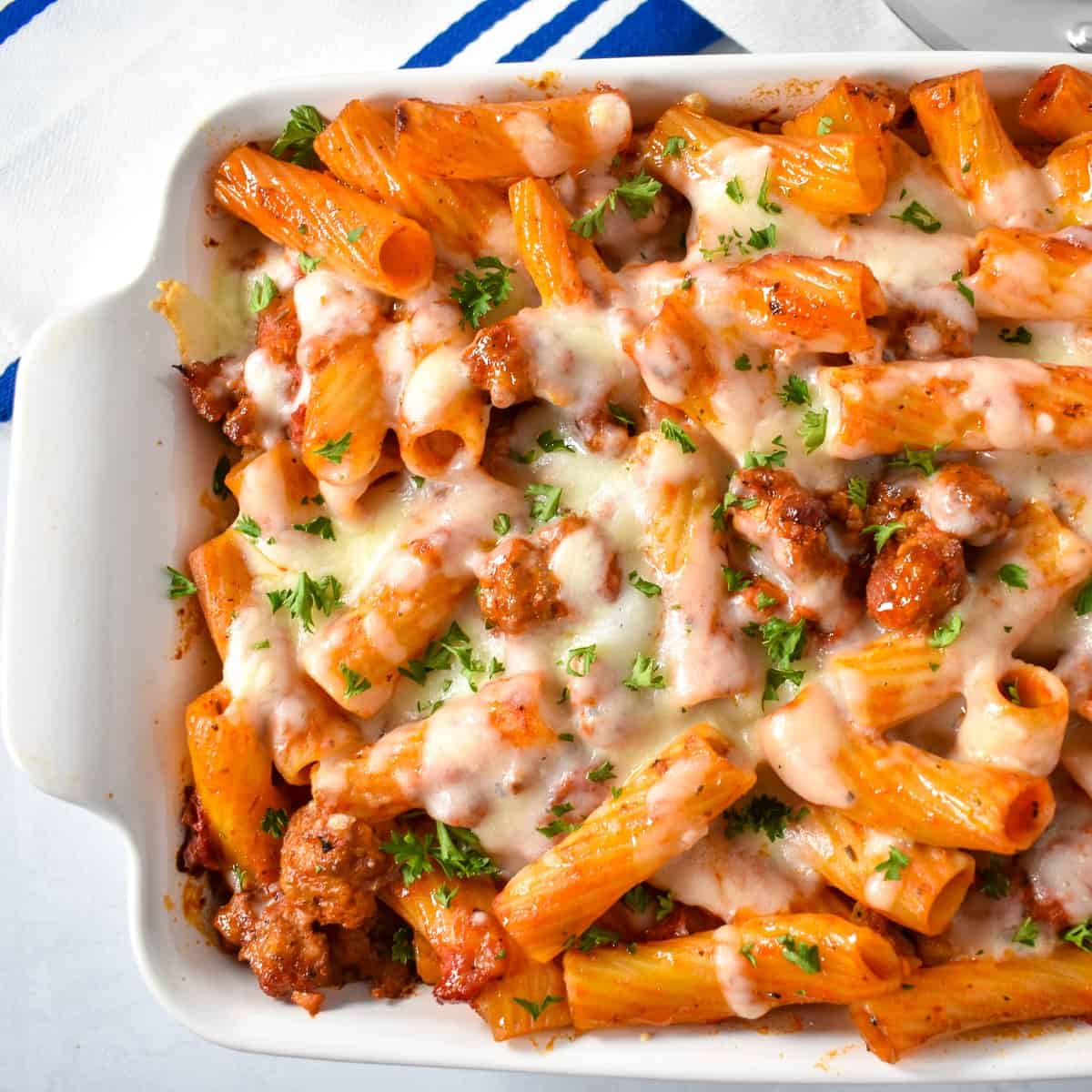
Loved this dish. I made it for the family and everyone loved it. No leftovers LOL.
-Jenni
What's new in this recipe
This recipe was originally published on May 21, 2018, and we've made some fantastic updates! The pictures have been refreshed, the instructions are now numbered for easier following, and we've expanded the recipe tips and notes section to set you up for success. You'll also find a substitutions and variations section with more options, a new prep tips section for smoother cooking, and convenient "jump to" links for simple navigation.
Jump to:
What's great about this recipe
- Easy to Make: With simple steps and minimal prep work, this recipe is perfect for both weeknight dinners and special occasions.
- Budget-Friendly Ingredients: This recipe uses affordable, easy-to-find ingredients like jarred pasta sauce, canned tomatoes, and boxed pasta, making it an excellent choice for feeding a crowd without breaking the bank.
- Comfort Food Favorite: This hearty, cheesy pasta dish is loaded with familiar flavors that will please everyone at the table.
- Great for Meal Prep: This recipe makes a large batch, making it perfect for meal prep. Pair the pasta with a salad and garlic bread to really stretch the servings.
Ingredients
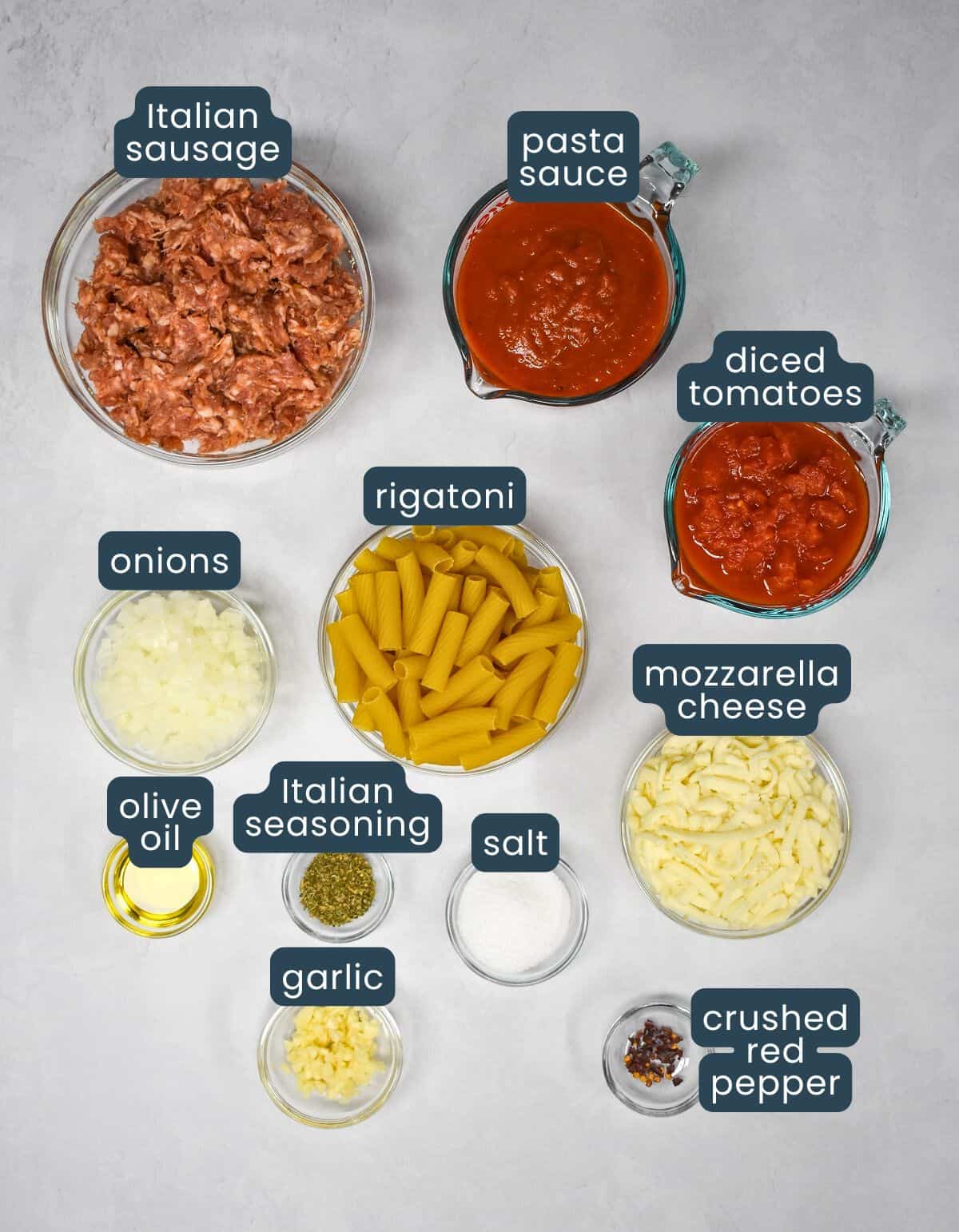
- Italian sausage - Use hot or mild sausage depending on how spicy you like it. Italian sausage is a wonderful ingredient that adds a ton of flavor to a dish, allowing us to keep the ingredient list to a minimum. Check out these 14 Italian sausage recipes for more dinner ideas.
- Oil - We use olive oil to brown the sausage since we're not cooking on high heat. Use your favorite oil if it's suitable for sautéing.
- Produce - Onions and garlic add flavor to the store-bought ingredients. Use parsley or basil for garnish if desired.
- Pantry - Jarred pasta sauce and canned diced tomatoes make up the sauce. Use a meatless variety since we're adding our own sausage. Rigatoni is the pasta of choice for this casserole; use your favorite brand.
- Seasoning - Italian seasoning and crushed red pepper add even more flavor to the sauce. Plus, salt for the pasta water (we use kosher salt).
- Cheese - We use pre-shredded mozzarella cheese; whole milk mozzarella melts best.
- See the recipe card for quantities and preparation.
Prep work: tips and notes
- Sausage: If using link sausage, run the tip of a sharp knife down the length of each sausage to cut the casing, then remove and discard. Tear the sausage into pieces to make it easier to break up during browning.
- Onion: Dice the onion finely so it integrates into the sauce.
- Garlic: Mince the garlic for even distribution of flavor.
- Cheese: If using block cheese, shred it with a box grater. Pre-shredded cheese works just as well for this recipe and saves a step for added convenience.
- Other Ingredients: Gather and measure the remaining ingredients to keep things organized and efficient.
How to make Italian sausage rigatoni
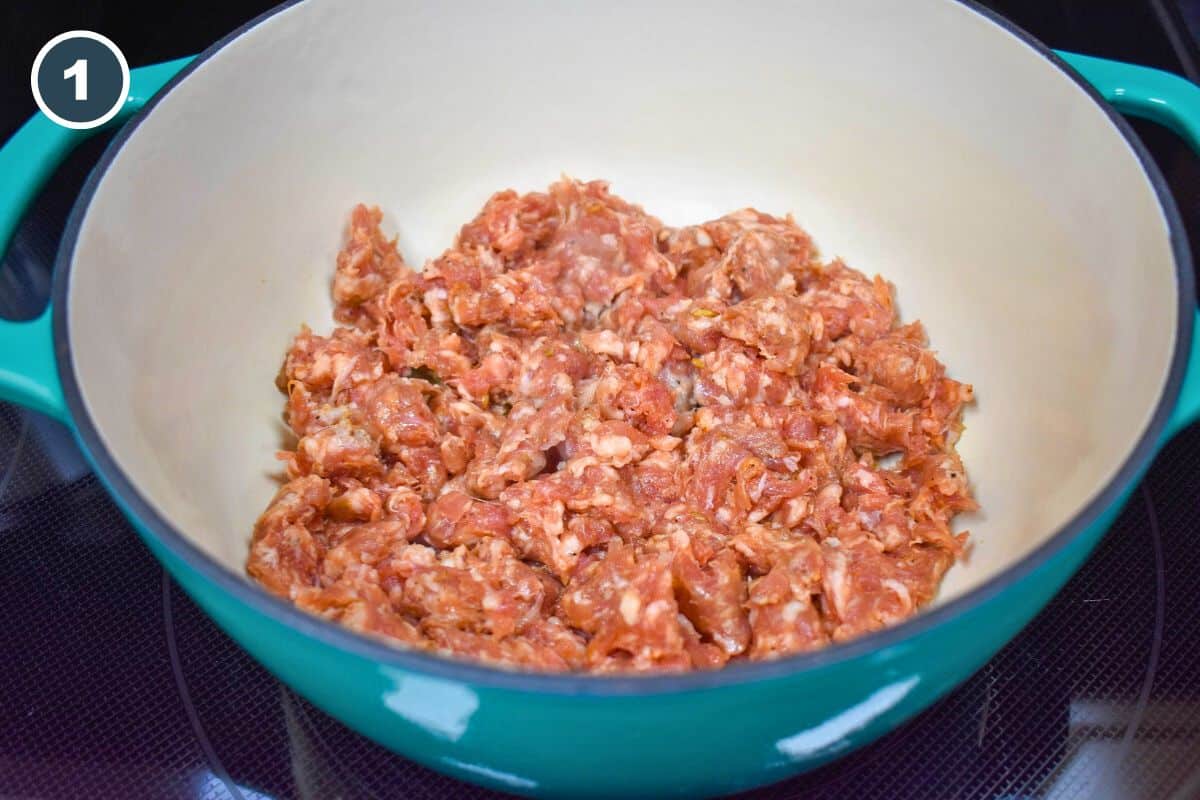
- Heat the olive oil in a large pot or sauté pan over medium-high heat. Add the sausage and cook for 5-6 minutes, stirring occasionally and breaking up any large pieces with a wooden spoon or spatula. Drain excess oil if desired.
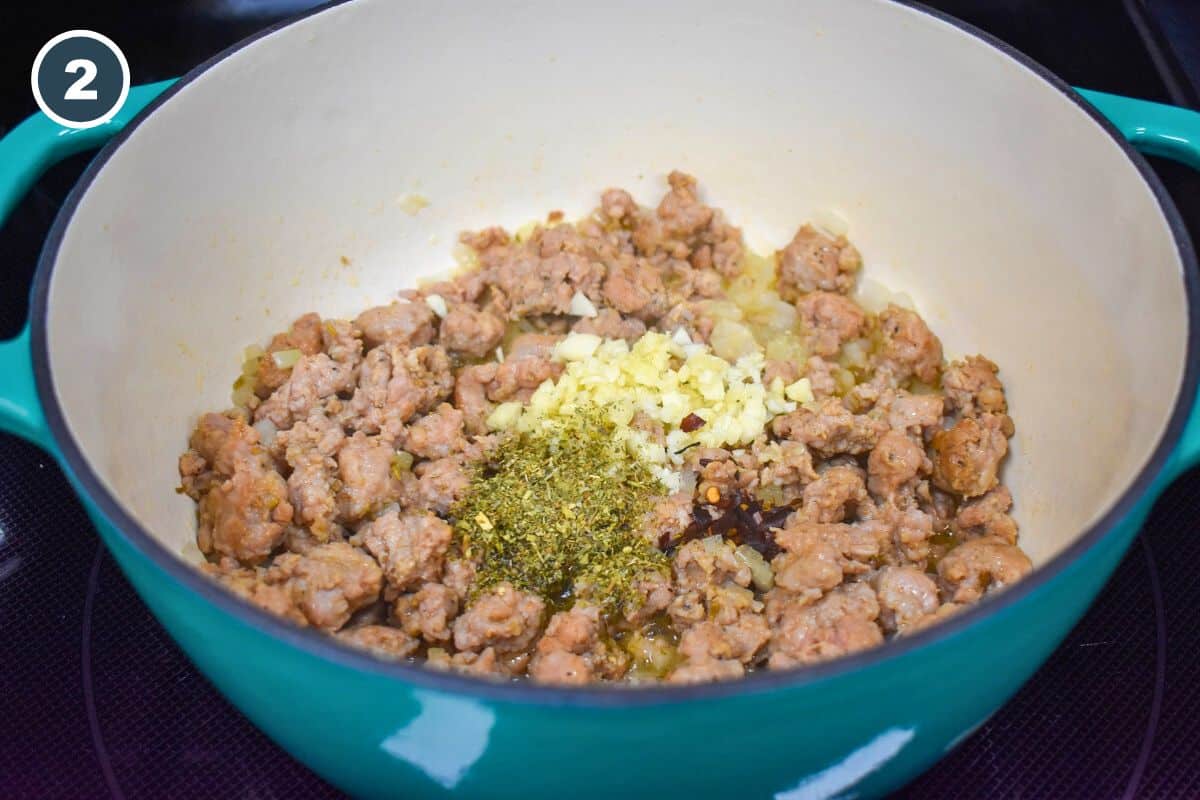
- Add the onions and cook for 3-4 minutes, stirring frequently. Then add the garlic, Italian seasoning, and crushed red pepper (if using), and cook for 1-2 minutes, stirring frequently.
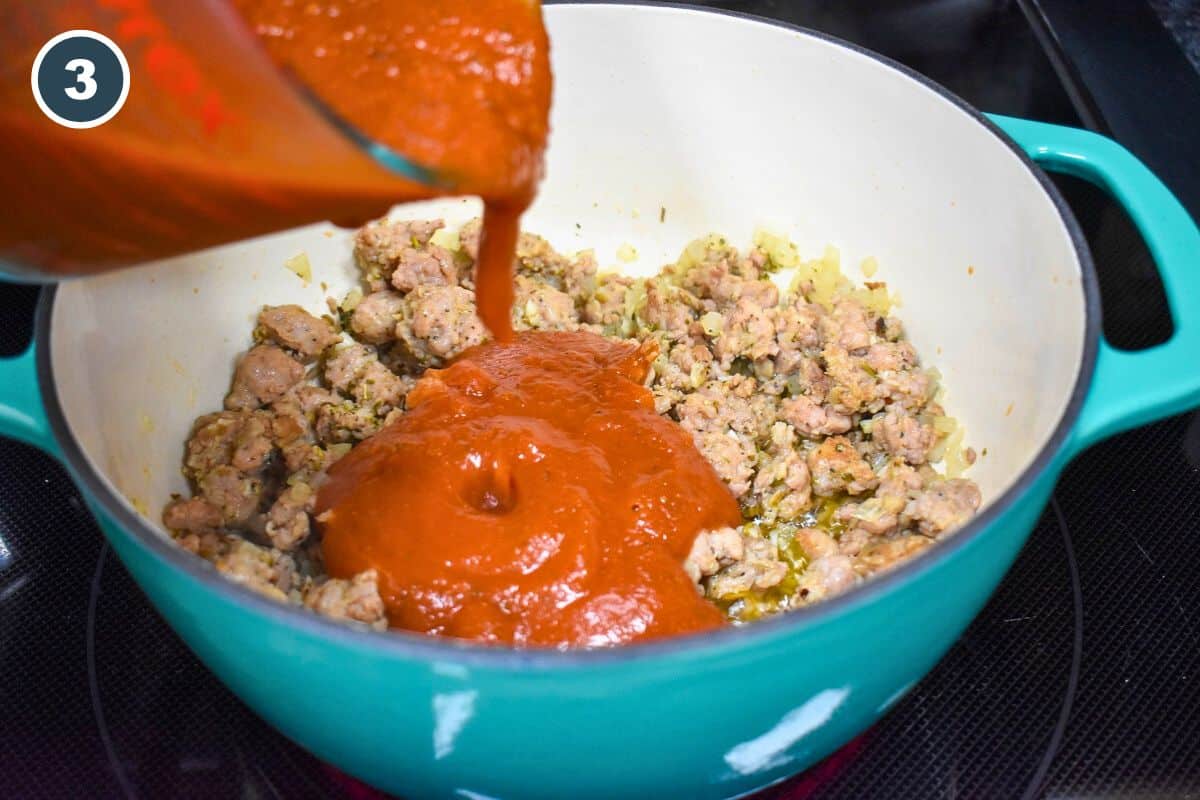
- Add the pasta sauce and diced tomatoes to the pot while stirring. Once the sauce comes to a simmer, lower the heat to medium-low and cover the pot.
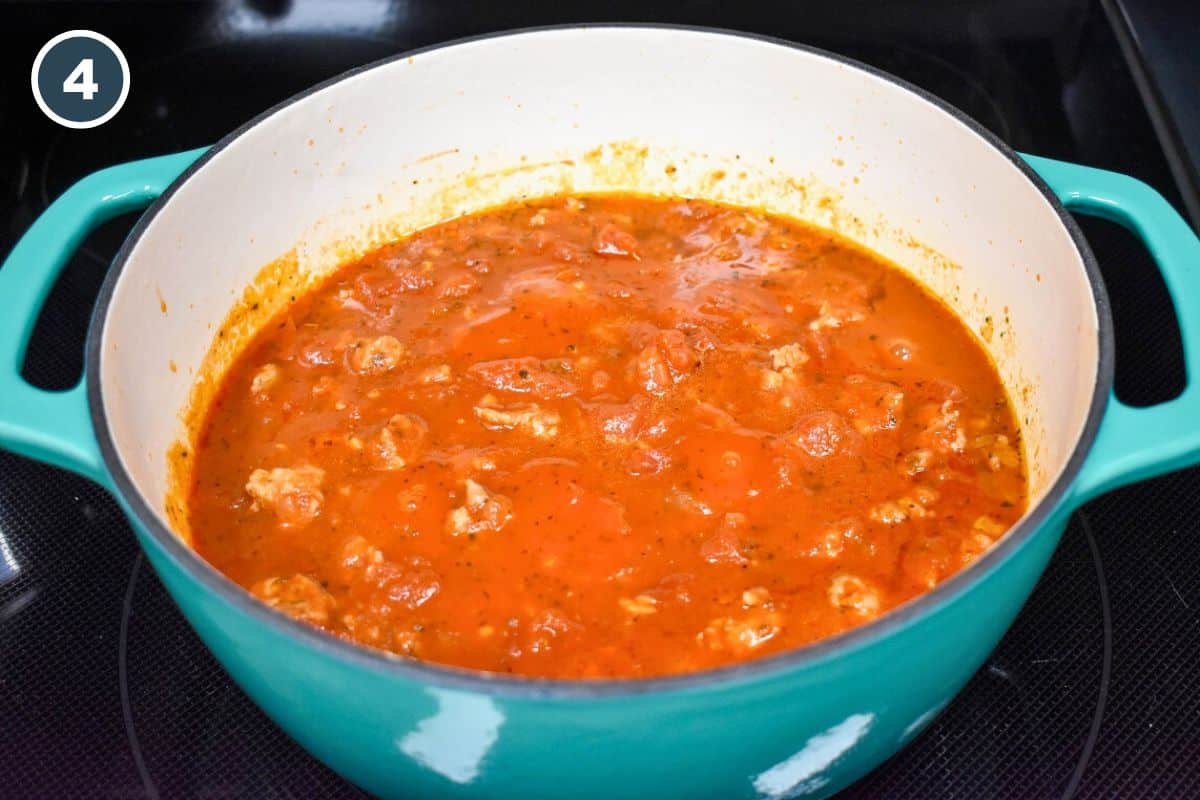
- Simmer the sauce gently for 20-25 minutes, stirring occasionally. Keep it at a simmer-if it starts to boil too vigorously, reduce the heat.
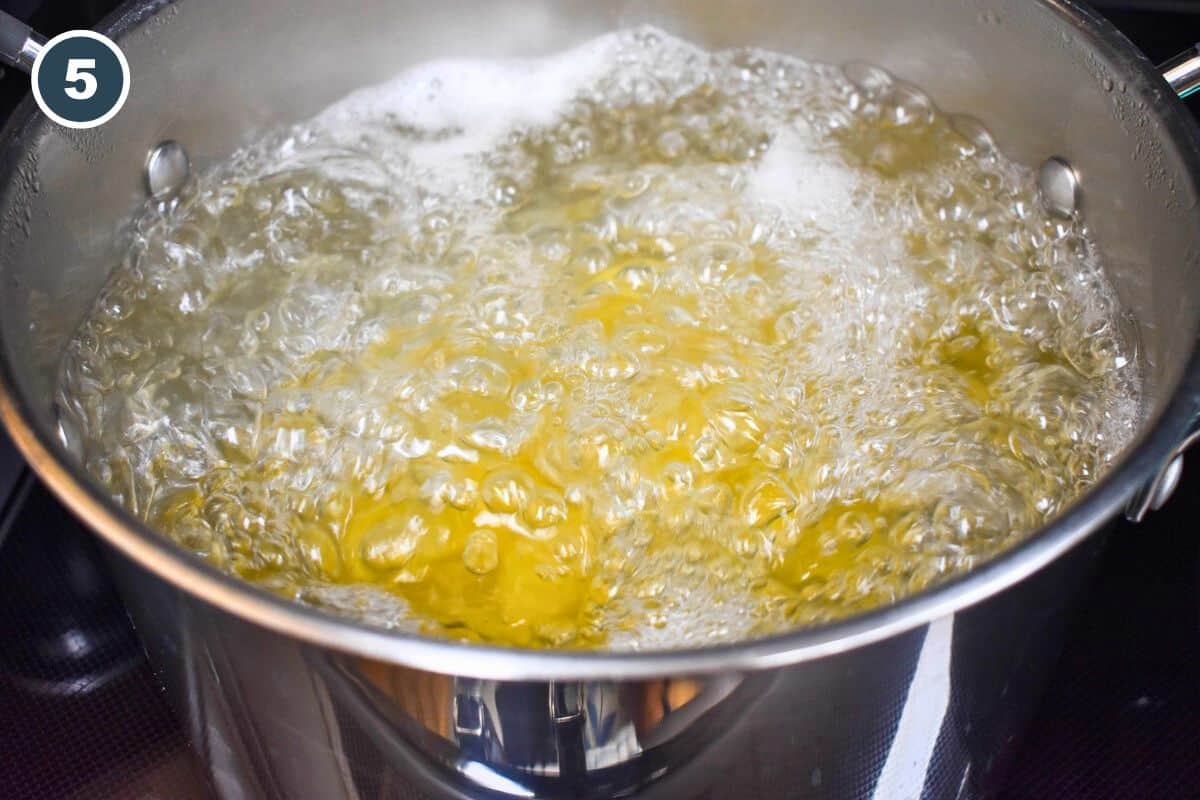
- Cook the rigatoni according to package directions for al dente while the sauce simmers. Drain well and reserve.
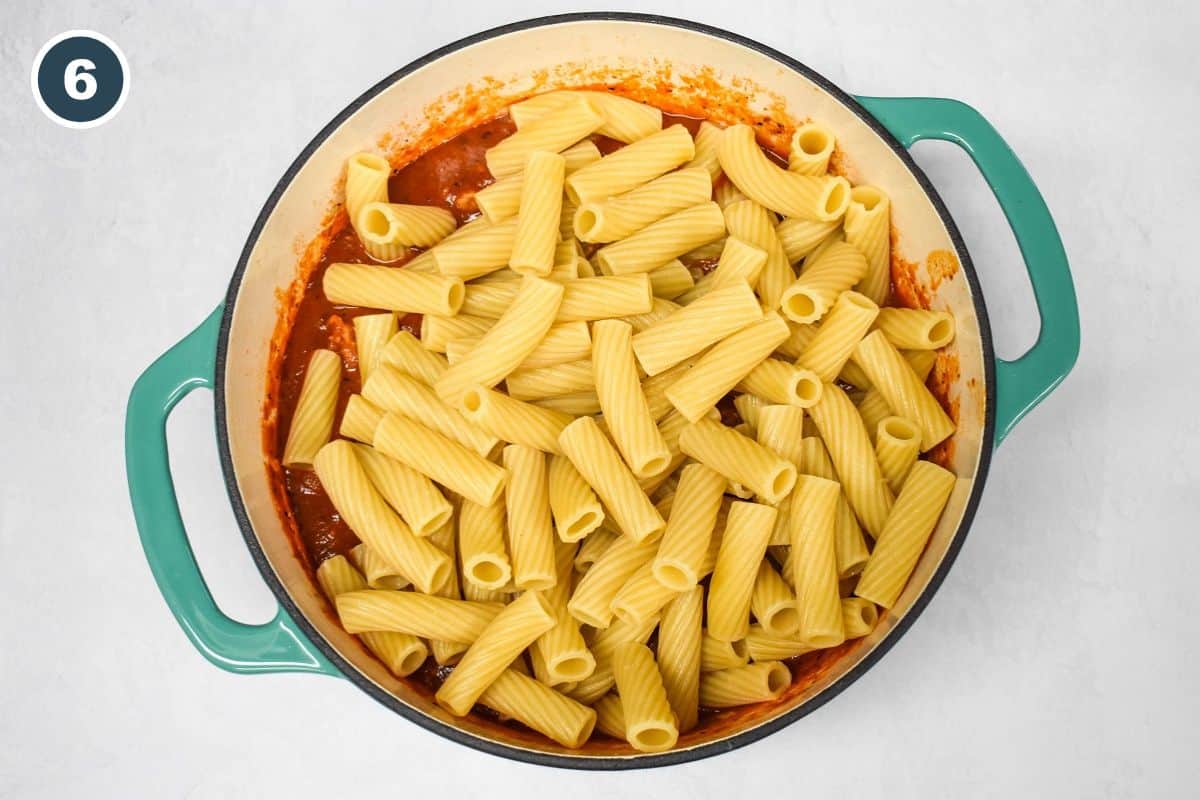
- Combine the pasta with the sausage and sauce, then preheat the oven to 350°F.
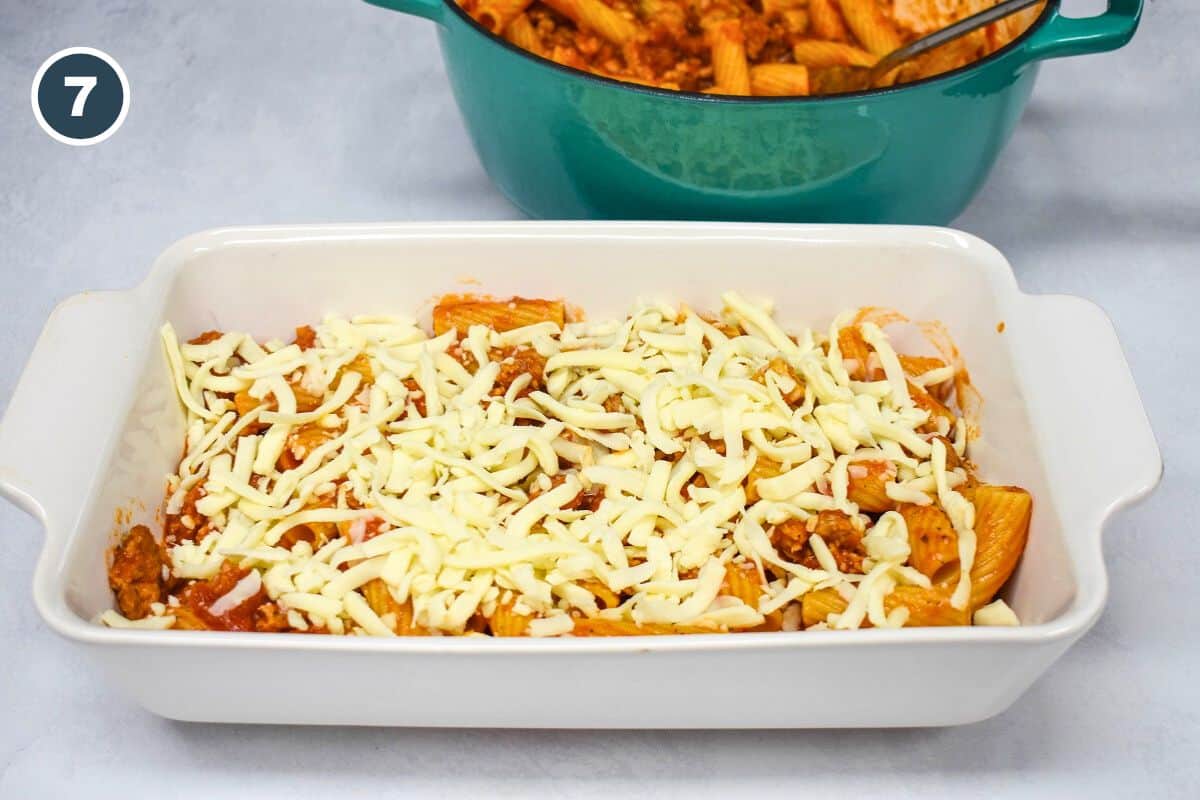
- Layer half of the pasta and sauce in a 2.5-quart (8x12 inch) casserole dish. Sprinkle half of the mozzarella cheese on top. Then add the remaining pasta.
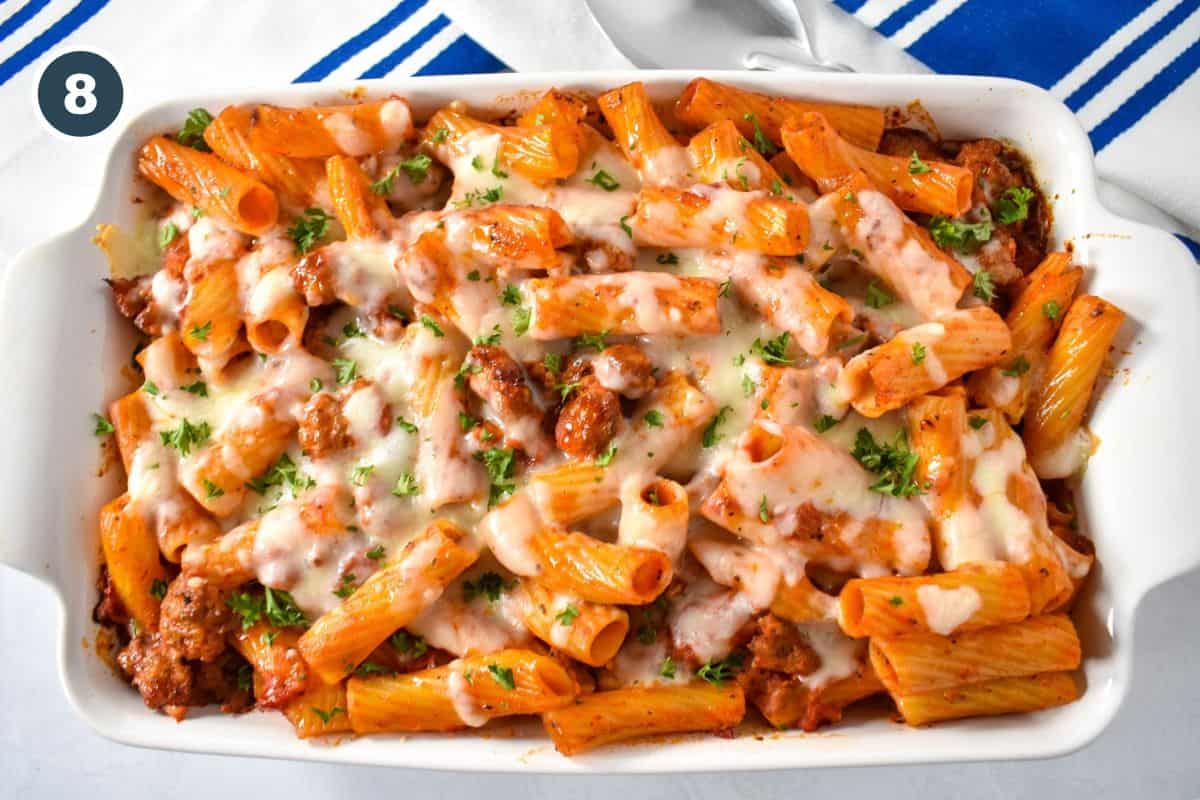
- Cover the casserole with foil and bake for 30 minutes, or until bubbly around the edges. Remove the foil, top with the remaining cheese, and bake uncovered for another 5 minutes, or until the cheese is melted.
Garnish with chopped parsley or basil, if desired. Let the pasta casserole rest for 10 minutes before serving.
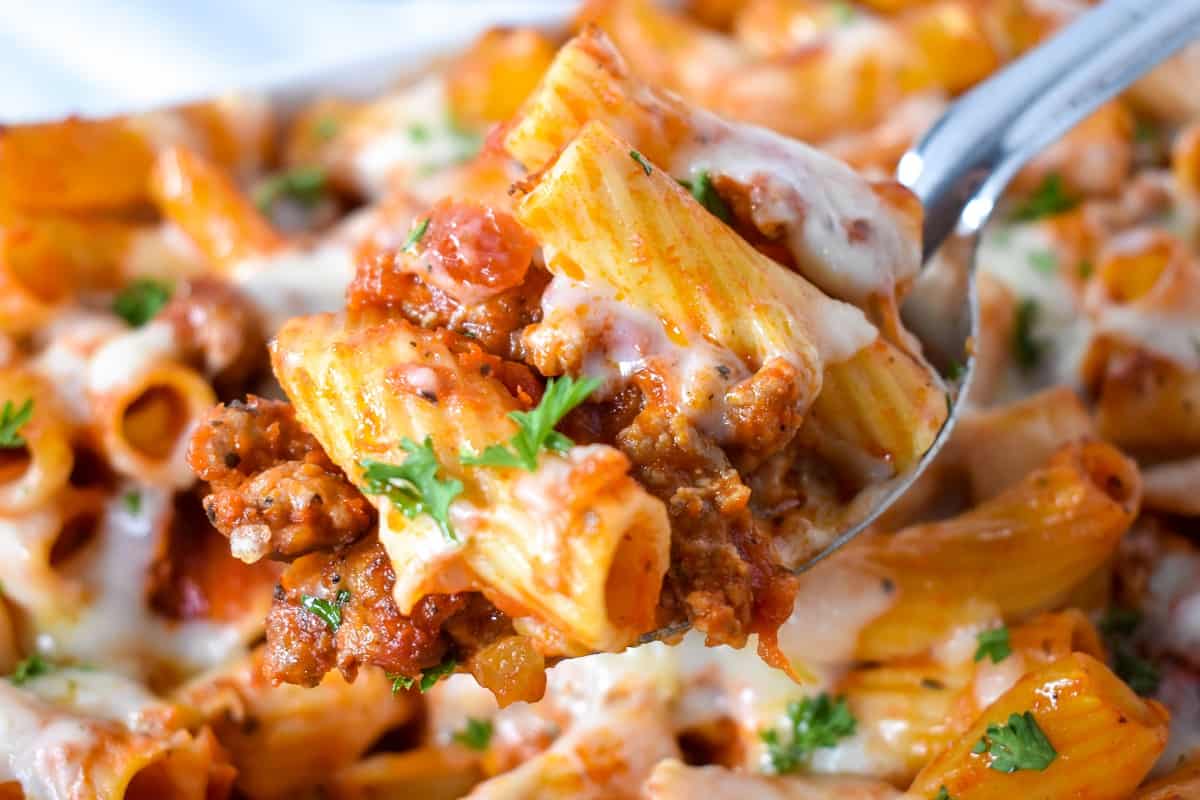
Substitutions and variations
- If you prefer a milder dish, leave out the crushed red pepper and use sweet Italian sausage instead of hot or mild. This will reduce the heat while still delivering a flavorful sauce.
- If you don't have rigatoni on hand, other short tube pastas like ziti, penne, or even macaroni work well. These pastas hold the sauce nicely and bake evenly.
- For a different flavor profile, try substituting mozzarella with a mix of provolone or fontina cheese. These cheeses melt well and add a unique taste to the dish.
- To incorporate more veggies, consider adding sautéed mushrooms, bell peppers, or spinach to the sauce. These additions bring extra nutrients and depth of flavor.
Storing and reheating instructions
- Storing
- Refrigerator: Let the rigatoni cool completely before storing. Place it in an airtight container and store in the refrigerator for up to 3-4 days.
- Freezer: Let the rigatoni cool completely before freezing. Place it in a freezer-safe container. Freeze for up to 3 months. Thaw in the refrigerator overnight before reheating.
- Reheating
- Oven: Preheat your oven to 350°F. Place the rigatoni in an oven-safe dish, cover with foil, and heat for about 20-25 minutes, or until warmed through.
- Stovetop: Heat a non-stick skillet over medium to medium-low heat. Add a little broth or water to prevent sticking. Place the rigatoni in the skillet, cover with a lid, and heat for about 5-7 minutes, stirring occasionally, until heated through.
- Microwave: Place the rigatoni on a microwave-safe plate and cover with a damp paper towel to retain moisture. Microwave on medium power in 30-second intervals, stirring between intervals, until heated through.
- Food Safety Guidance Leftovers must be reheated to an internal temperature of 165°F. Do not leave the rigatoni out at room temperature for more than 2 hours (or 1 hour if the temperature is above 90°F) before storing. For more information on food storage and safety guidelines, visit the U.S. Department of Agriculture and foodsafety.gov.
Recipe tips and notes
- Avoid overcooking the pasta; cook it just to al dente to prevent it from becoming mushy when baked.
- After browning the sausage, you may want to drain excess oil depending on its fat content. To do this, take the pot off the heat, arrange the sausage on one side of the pot, and tip it slightly so that the oil pools on the opposite side. Use a large spoon to scoop the excess oil into a small bowl or can.
- Reserve a cup or so of the pasta water. If the pasta gets sticky while waiting for the sauce, a few tablespoons of pasta water will help loosen it.
- If you're sensitive to salt, use reduced-sodium ingredients like pasta sauce, diced tomatoes, and cheese.
- This baked rigatoni can be prepared ahead of time for added convenience. Assemble the casserole as directed and cover with foil. Refrigerate for up to 1 day. Before baking, allow the dish to sit at room temperature for about 30 minutes to remove the chill, as some bakeware does not handle extreme temperature changes well. Then bake as directed, although it may be necessary to extend the cooking time by 10-15 minutes to ensure it's heated through.
In this casserole recipe, pantry staples and fresh ingredients combine to create a homemade taste in a fraction of the time. If you like this recipe, you'll also enjoy our beef and macaroni casserole and baked spaghetti; simple pasta recipes you can whip up even on busy weeknights.
Subscribe
Join our Newsletter to get the latest recipes, cooking tips, and kitchen inspiration delivered straight to your inbox. Don't forget to follow us on social media for daily recipe ideas and more!
📖 Recipe
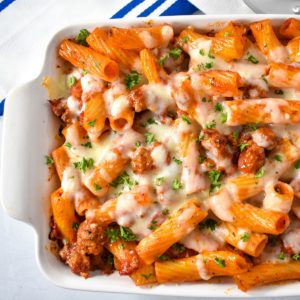
Italian Sausage Rigatoni
Ingredients
- 1 tablespoon Olive Oil
- 1-1¼ pound Italian Sausage (hot, mild, or sweet) casings removed and torn into pieces, or use bulk sausage
- 1 medium Onion diced (yellow or white)
- 3-4 Garlic Cloves minced
- 1 teaspoon Italian Seasoning
- Pinch of Crushed Red Pepper optional - leave it out if you don't like spicy
- 1 (24-ounce) jar Pasta Sauce (use a meatless variety, and your favorite brand)
- 1 (14-ounce) can Diced Tomatoes do not drain
- 2 tablespoons Salt for the pasta water (we use kosher salt)
- 12 ounces Rigatoni cooked to package directions for al dente
- 2 cups Shredded Mozzarella Cheese 8-ounce package
- Chopped parsley or basil for garnish optional
- Parmesan cheese for serving optional
Instructions
- Heat the olive oil in a large, deep sauté pan or pot over medium-high heat. Add the sausage and cook for 5-6 minutes, stirring occasionally and breaking up any large pieces with a wooden spoon or spatula. Drain excess oil after browning, if desired (see note 1).
- Add the onions and cook for 3-4 minutes, stirring frequently.
- Add the garlic, Italian seasoning, and crushed red pepper (if using). Cook for 1-2 minutes, stirring frequently.
- Pour in the pasta sauce and diced tomatoes, stir well. Once the sauce comes to a simmer, lower the heat to medium-low and cover the pot. Cook the sauce gently for 20-25 minutes, stirring occasionally. Keep the sauce at a simmer; if it's boiling too vigorously, lower the heat a bit.
- While the sauce simmers, bring a large pot of water to a boil. Add the salt and rigatoni. Cook the pasta according to the package directions for al dente, stirring often at first to prevent sticking. Before draining, reserve a cup of pasta water in case it's needed to loosen the pasta later. Drain the rigatoni well using a strainer.
- Combine the rigatoni with the Italian sausage sauce.
Build the Casserole
- Preheat the oven to 350°F.
- Add half of the pasta and sausage mixture to a 2.5-quart (8x12 inch) casserole dish. Sprinkle half of the mozzarella cheese on top, then add the remaining pasta.
- Cover the casserole with foil and bake for 30 minutes, or until bubbly around the edges.
- Remove the foil, top with the remaining cheese, and bake uncovered for an additional 5 minutes, or until the cheese is melted.
- Garnish with chopped parsley or basil, if desired. Let the casserole rest for 10 minutes before serving.
Notes
- After browning the sausage, you may want to drain excess oil depending on its fat content. To do this, take the pot off the heat, arrange the sausage on one side of the pot, and tip it slightly so that the oil pools on the opposite side. Use a large spoon to scoop the excess oil into a small bowl or can.
- Avoid overcooking the pasta; cook it just to al dente to prevent it from becoming mushy.
- If using sausage links instead of bulk sausage, run a sharp knife along the length of the sausage, remove the casing, and tear it into small pieces. This makes it easier to break it up in the pan.
- Reserve a cup or so of the pasta water. If the pasta gets sticky while waiting for the sauce, a few tablespoons of pasta water will help loosen it.
- If you're sensitive to salt, use reduced-sodium ingredients like pasta sauce, diced tomatoes, and cheese.
Nutrition
The nutritional information above is computer generated and is only an estimate. There is no guarantee that it is accurate. This data is provided as a courtesy for informational purposes only.


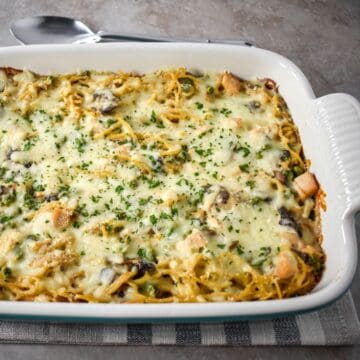
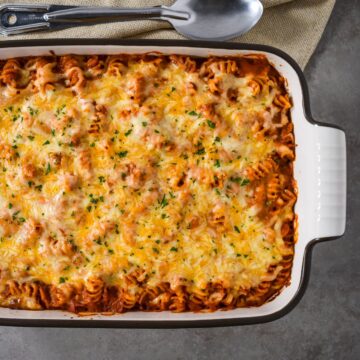
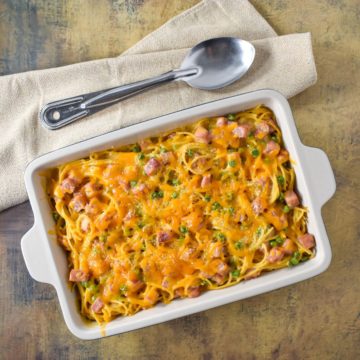
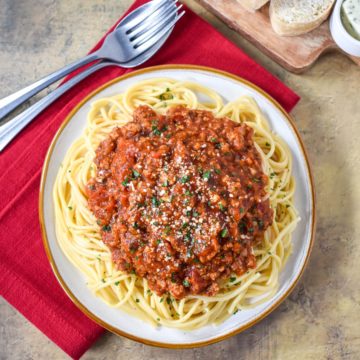
Pamela
Should the diced tomatoes be drained before adding to the pan?
Elizabeth Rodriguez
No, do not drain.
Carole Miller
Delish. Added extra garlic and some basil for my taste. Loved it. Will definitely make again
Jenni
Loved this dish. I made it for the family and everyone loved it. No left overs lol